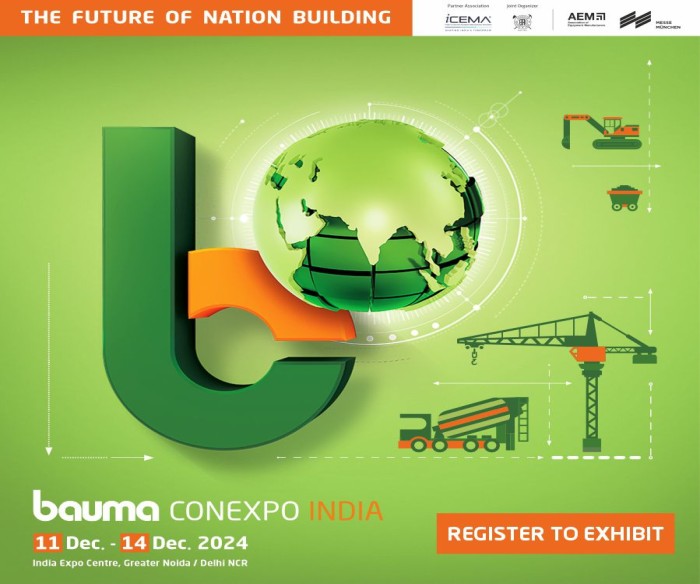Smart Cities: Features, Importance and Role of Technology
Smart cities, being both a technological infrastructure and a conceptual framework, can, nonetheless, be used to effect change. Their data collection and dissemination not only predicts consumption, movement, and engagement patterns, but also reshapes mobilities and meanings through tools, applications, and games that encourage play and participation in urban planning processes. They are influencing and moderating our actions, as well as how we connect with and experience the city and each other. Simultaneously, issues such as access, involvement, sustainability, the environment, and the inclusion and marginalisation of particular groups continue to serve as lenses for determining what our future cities should look like and what steps we should take now to address these concerns.
Tracing the origins of the phrase "smart" in the label "smart city" will help you understand how the term "smart" is used. Smartness is a marketing term that refers to a user's point of view. Smart is preferable to the more elitist adjective intelligent since it appeals to a broader group of community members. Intelligent is confined to having a fast thinking and being attentive to criticism, whereas smart is more user-friendly. The smart city must adapt to the needs of its users and provide customizable interfaces.
Smart city growth is a recurring characteristic of urban life, and it does not look to be slowing down any time soon. A variety of digital devices are being used to both mediate and monitor our lives. Some of these technology, such as smartphones, have become so commonplace that they are no longer considered innovative. Others, such as Augmented Reality (AR), Virtual Reality (VR), and Mixed Reality (MR), are still in their infancy or are constantly being reinvented (MR). In a similar way, digital media is becoming increasingly ingrained in the urban fabric. This blending of the physical and digital is frequently portrayed as liberating, allowing for a more detailed understanding of the various flows of daily life. These technologies, however, are not only used to monitor and recreate urban rhythms; they are also used to reshape, reimagine, and regulate the rhythms, interactions, and practises of daily life.
The Smart City Mission's goal is to use technology and data to improve cities' infrastructure and services. Its goal is to develop reproducible models that will encourage other cities to become "smart." Smart metres for electricity and water, intelligent traffic-management systems, e-governance, and citizen services are among the policies it pushes, as are more established alternatives like waste-to-compost or waste-to-energy, recycling, and waste reduction.
Requirement and Demand of Smart Cities
More than half of the world's population now lives in cities. According to projections, by 2050, that figure will have risen to two-thirds. This drastic change is owing to the numerous chances people are given in cities to construct their own lives. Rising urbanisation, on the other hand, brings with it new challenges: as cities expand, people's wants and aspirations must be satisfied in environmentally friendly ways.
One of the most important concerns we are now dealing with is climate change. CO2 emissions must be reduced in the coming decades, as well as efforts to prevent global warming, floods, and prolonged heat waves. Cities are responsible for over three-quarters of global greenhouse gas emissions. They are also expected to supply remedies because they are large pollutants.
Cities are affected by the global networking of labour forces, institutions, and information. Economic and social systems are shifting, and city politicians must adjust their methods to meet these new challenges. It entails putting cities in a position where they can cooperate and compete on a global scale. The remedies made must not be solely cosmetic in nature, but must also address internal social, economic, geographical, and structural issues.
Education, qualification, research, and entrepreneurial spirit, as well as innovation, productivity, and flexibility, are all actively supported in smart economies. The fundamental ingredients for creative production are continuous information acquisition and transfer, as well as local and global networks. Businesses that provide IT, environmental, and energy services, in particular, are seen as the engine of smart economies.
One of a city's main issues is reducing energy and raw material use, as well as planning ahead for resource management. For energy, mobility, infrastructure, and buildings, smart supply and disposal systems are equally as crucial as process-driven improvements, technology innovations, and networks. Smart grids, for that matter, are a step toward smart energy consumption: energy generation, storage, and consumption are all managed by intelligent networks and monitoring systems. To make actual energy consumption more transparent, smart metres are implemented.
Smart Cities Development India
The government of India began the Smart City Mission in 2015. The goal was to develop infrastructure and spur economic growth in 100 of the country's largest cities. This project also intends to establish repeatable city models that can be used to inspire other cities around the country to become "Smart." The Smart City mission assists communities in addressing socioeconomic and environmental issues in metropolitan regions. The first list of 20 cities was presented in 2016, with the goal of completing their development by 2022. Ahmedabad, Bhubaneswar, Pune, Coimbatore, Jabalpur, Jaipur, Surat, Guwahati, Chennai, Kochi, Visakhapatnam, Indore, Bhopal, Udaipur, Ludhiana, Kakinada, Belgaum, Solapur, Bhuvanagiri, and the NDMC region in New Delhi were among the 20 cities. More cities were added in following rounds.
The government has contributed a total of Rs 7,20,000 crore. Over the next five years, each city will receive an average of Rs 100 crore. The scheme would be run as a 50:50 Centrally Sponsored Scheme (CSS), with the centre contributing Rs 50 crore and the state governments or union territories contributing Rs 50 crore. This has also become one of the obstacles for India's smart city initiative, as the Centre only released Rs 27,282 crore until November 2021, while states only released Rs 20,124 crore.
The Mission also recognises the importance of bridging gaps in fundamental infrastructure such as water and sewerage pipes, sanitation facilities, and other government programmes such as Amrut and Swachh Bharat to make the city really smart. The only area that hasn't been thoroughly explained is e-governance and information and communication technology (ICT) enabled solutions, which are essential for any smart city implementation.
While the scheme paper mentions a variety of e-governance/ICT solutions such as water quality monitoring, leakage detection, public information, and grievance redress, the implementation mechanisms are not specified.
The business sector's involvement in the mission's implementation has been emphasised through Public Private Partnerships (PPPs). The smart city proposals reflected the desires of citizens (SCPs). Each smart city has its own Special Purpose Vehicle (SPV), which is jointly sponsored by the State/UT and the Urban Local Body, with a 50:50 equity shareholding. The SPV will use Project Management Consultants (PMCs) to turn the SCPs into projects, which it will then implement. The Swiss challenge approach has been used by certain state governments to finalise tenders.
The Indian government intends to build up command and control centres in all 100 smart cities by August 15, according to Urban Affairs Minister Hardeep Singh Puri. The smart cities mission's implementation has been extended until June 2023, and all projects, including Thiruvananthapuram, will be completed on time.
Role of Technology in Smart Cities
To provide connected solutions for the public, smart cities use a variety of software, user interfaces, and communication networks, as well as the Internet of Things (IoT). The Internet of Things is the most important of these. The Internet of Things (IoT) is a network of interconnected devices that communicate and share data. Vehicles, home appliances, and on-street sensors are all examples of this. Data acquired from these devices is kept in the cloud or on servers, allowing both public and private sector efficiencies to be improved, resulting in economic advantages and improvements to individuals' lives.
Edge computing is used by many IoT devices to ensure that only the most relevant and important data is sent through the communication network. A security system is also in place to safeguard, monitor, and regulate data transfer from the smart city network, as well as to prevent unauthorised access to the city's data platform's IoT network. The deployment of technology is critical in a smart city. Smart city technologies are made up of various combinations of technical infrastructure that combine to generate an array of smart city technologies with differing levels of human-technology interaction.
ICT and IOT (Internet of Things) deployment exist in the implementation of the following integrated features of smart cities: citizen participation, economy and employment, health, education, open spaces, housing and inclusion, transportation and mobility, providing all facilities within walking distance, parking spaces, IT connectivity, intelligent government services, energy supply, water supply, wastewater management, and ensuring water/air quality.
Ever since the government's ambitious project has been announced and cities have been shortlisted, many countries across the globe have shown keen interest to help specific shortlisted cities in building the smart cities and are willing to invest financially. Countries like Sweden, Malaysia, UAE, USA, etc. have agreed to partner with India for the mission. For example, UK has partnered with the Government to develop three India cities-Pune, Amravati and Indore. Israel's start-up city Tel Aviv also entered into an agreement to help with urban transformation in the Indian cities of Pune, Nagpur and Nashik to foster innovation and share its technical know-how. France has piqued interest for Nagpur and Puducherry, while the United States is interested in Ajmer, Vizag and Allahabad. Also, Spain's Barcelona Regional Agency has expressed interest in exchanging technology with the Delhi. Apart from foreign government, many organizations and multilateral agencies are also keen to partner with the Indian government and have offered financial assistance by way of loans.
Features of the Smart Cities
A smart city's main purpose is to develop an urban environment that provides citizens with a high quality of life while simultaneously creating overall economic growth. As a result, one of the most significant advantages of smart cities is their capacity to permit increased service delivery to inhabitants with less infrastructure and cost. As the population of cities grows, it becomes vital for these cities to make better use of existing infrastructure and assets in order to handle the growing population. Smart city applications can help to make these improvements, as well as improve city operations and citizens' quality of life.
Cities may use smart city apps to discover and develop new value from their existing infrastructure. The enhancements help governments and citizens save money by facilitating new revenue streams and operational savings. Smart cities use a web of connected IoT devices and other technology to fulfil their aims of bettering people's lives and growing their economies.
A smart healthcare system, governance, transit system, greater security surveillance, smart infrastructure, better job prospects, and all other facilities and amenities that make life comfortable are all included in smart cities.
- The society's needs for well-developed health care, education, housing, and infrastructure.
- Deliver improved core services to the community in a consistent and cost-effective manner.
- Housing that is better.
- Improve the society's economic growth.
- Resource management that is effective in reducing depletion.
- Increase the number of work opportunities.
- A well-thought-out strategy for data analysis and community participation in broadening the local economy.
- Urbanization that is well-managed, as well as coping strategies for population expansion and climate change.
- The application of smart technology to meet the demands of the community
- The transportation system has been streamlined.
Smart utility meters
A top IoT device among utility companies is the smart meter. These devices attach to buildings and connect to a smart energy grid, allowing the utility companies to manage energy flow more effectively.
Smart meters also allow users to track their energy consumption—leaving a significant financial impact. Insider Intelligence expects utility companies to save $157 billion by 2035 due to smart meter adoption and implementation.
Smart transportation
Connected vehicles have risen to the forefront of public transportation, and their efforts are already bearing dividends. Drivers are attracted to smart transit because of voice search and location data capabilities, and as smart apps expand and grow, so will the use of smart transport.
Smart grids
Smart grids are arguably the best example of smart architecture and infrastructure, as they greatly aid resource conservation. For example, in Amsterdam, home energy storage units and solar panels are being offered to residents who are connected to the city's smart grid.
By allowing residents to store energy during off-peak hours, these batteries assist reduce grid stress during peak hours. Residents can also sell any excess energy generated by the solar panels back to the grid.
Smart waste management solutions
Waste management is both expensive and inefficient, and it can result in traffic congestion. Smart waste management solutions can help ease some of these issues by tracking how full trash cans are at any one time and sending that information to waste management businesses, which can then provide the optimal waste collection routes. Some smart waste bins, can notify consumers which items should be composted or recycled, and can even display messages that demonstrate how much money can be saved by recycling.
Smart air quality monitors
Air particles, dust, grime, and cleaning chemicals are continually floating around in the air of one's office building or home. These particles can be detected by smart air quality sensors, which can then alert users to the presence of contaminants. The use of an indicator light or push notifications to one's smartphone or tablet to monitor indoor air quality (IAQ) can better inform people of dangerous pollutant levels.
Some Smart Cities of India
Bhubaneshwar is the state capital of Odisha. It is classified as a Smart City in the "Social" category. Bhubaneshwar has a well-managed education system, making it a socially intelligent city. For managing the city and resolving community issues, a unified municipal site is a huge accomplishment. For traffic management, there is a well-functioning traffic control room and a functional adaptive traffic light system. The local community's children may now enjoy the Sensory Park and Splash Park. Bhubaneswar Town Centre District has been chosen as a 985-acre area-based development.
Puneis becoming one of the most popular alternatives for both residential and commercial uses, thanks to advancements in the IT sector, improved connectivity, and public transit. There are around 500 IT and non-IT enterprises in and around Baner, Pune. Some of the city's most prominent neighbourhoods include Dhayari-Narhe-Ambegaon BK, Hadapsar, Wakad, Dhanori-Lohegaon, Pimple Saudagar, and Wagholi. Commercial spaces and housing complexes are geared toward middle-income and low-cost home purchasers. The smart city project in Pune includes buses from Pune Mahanagar Parivahan Mahamandal Limited (PMPML) and the planned Metro train.
The Pink City, Jaipur, is the capital of the Indian state of Rajasthan. It is one of India's most popular tourist sites, with a rich history and tradition. In Jaipur, innovative and inclusive solutions make life easier. The 600-acre walled city area is being revitalised and reused to boost local economic growth. Multimodal integration at two UG Metro stations, Intelligent IPT (auto and taxi) stands, Digital displays and information kiosks at heritage gates, Waste Water Recycling for Select Public Buildings and Monuments, Automated online water quality Monitoring System for the distribution network, and more are some of the city's most recent developments.
The Dehradun Smart City project aims to improve the city's infrastructure, electricity and water supply, transit facilities, and a variety of other amenities to make life easier and more comfortable for residents. The delivery of public services has improved as a result of this project. Electric buses will be purchased as part of the reconstruction plan to ensure smooth transit. The initiative also includes the establishment of a number of smart schools. Tourists will benefit from the introduction of the city e-pass, which allows them to pay their taxes online without fuss.
New Delhi is the country's capital city. Within a 5-kilometer radius of the city centre, there are numerous schools and colleges, hospitals, leisure clubs, and offices. Better connectivity between different parts of the city is provided via metro rail and motorways. There are many IT and non-IT private enterprises that offer career opportunities in addition to government departments. The city's well-developed infrastructure makes for a pleasant living environment. The city's improved water supply system, electrical distribution, and sanitation have increased the value of living in New Delhi. The Smart City Welfare Society exists to meet the needs of cities that want to be smart.
These are some of the smart cities that have been established and are still being developed in various aspects to meet all of the smart city criteria.
Need For Smart Cities
Conserve resources: By the end of 2022, India is expected to have built 11 crore dwellings at a cost of $2300 billion. With the current cities, it would need the utilisation of scarce resources in the country. All constructions in smart cities, on the other hand, would be developed to conserve ecological resources like power and water by utilising renewable energy sources like solar energy. This would assist to save 30% of water and nearly 40% of energy, while also lowering maintenance expenses by 10% to 30%.
Environmentally friendly:Every Indian person has the right to decent hygiene and cleanliness. Providing sanitation to every home with waste water and solid waste management will help to reduce unhygienic conditions in the country and create an eco-friendly environment. India accounts for 50% of global open defecation; providing sanitation to every home with waste water and solid waste management will help to reduce unhygienic conditions in the country and create an eco-friendly environment.
Better transportation:Every smart city created in India must give easy access to residents living within 800 metres of the built-up region, with workplaces no more than 30 minutes distant in small towns and 45 minutes in metros. In the next decade, these cities plan to provide electric and hybrid automobiles with charge stations, as well as high-speed railroads, metro trains, and monorail.
Improved Communications and Information Technology:The introduction of smart cities will make use of technology that will partially replace manpower in cities such as Mumbai, Delhi, Kolkata, Chennai, and others. You may expect improved internet access that will seamlessly connect these cities.
Other needs will be met:At least 95 percent of the population in every smart city will have suitable access to workplaces, adequate public transportation, and biking and pedestrian paths. Shops, parks, and schools will be within 400 metres of dwellings in Transit Development zones, where the poor will make up at least 20% of the population.














Leave a comment